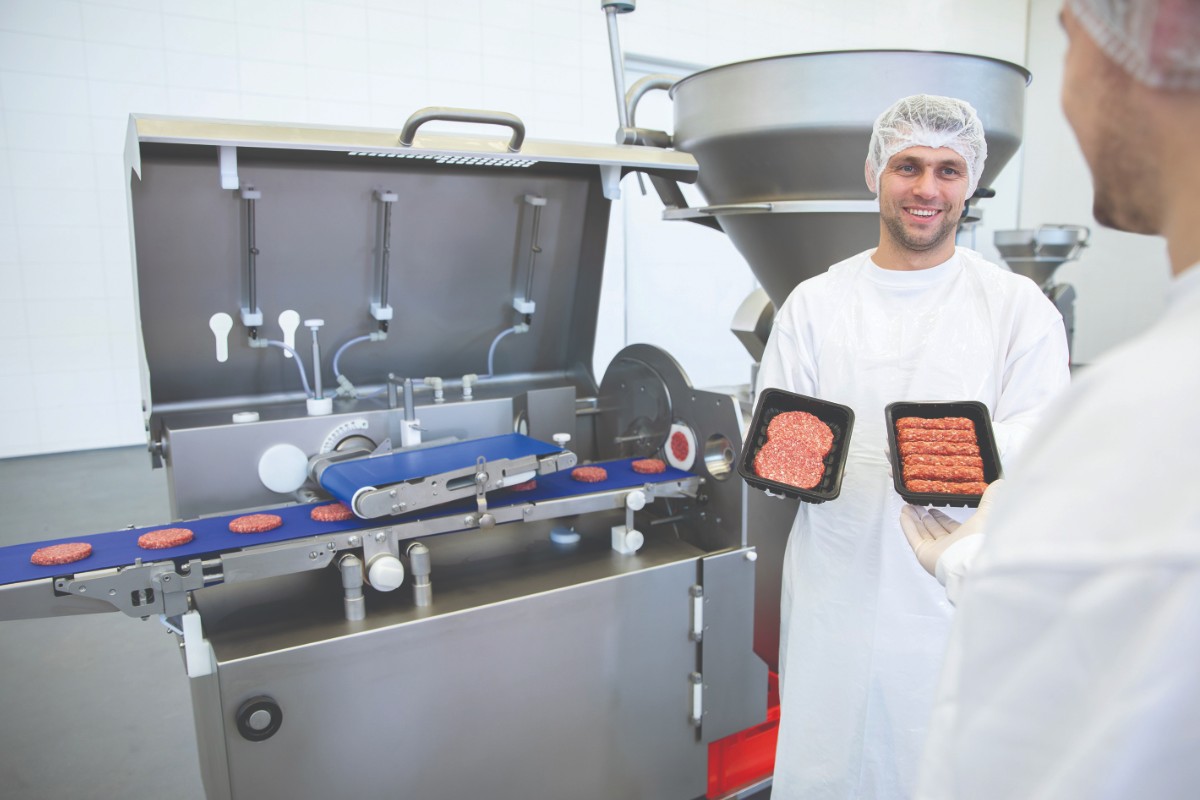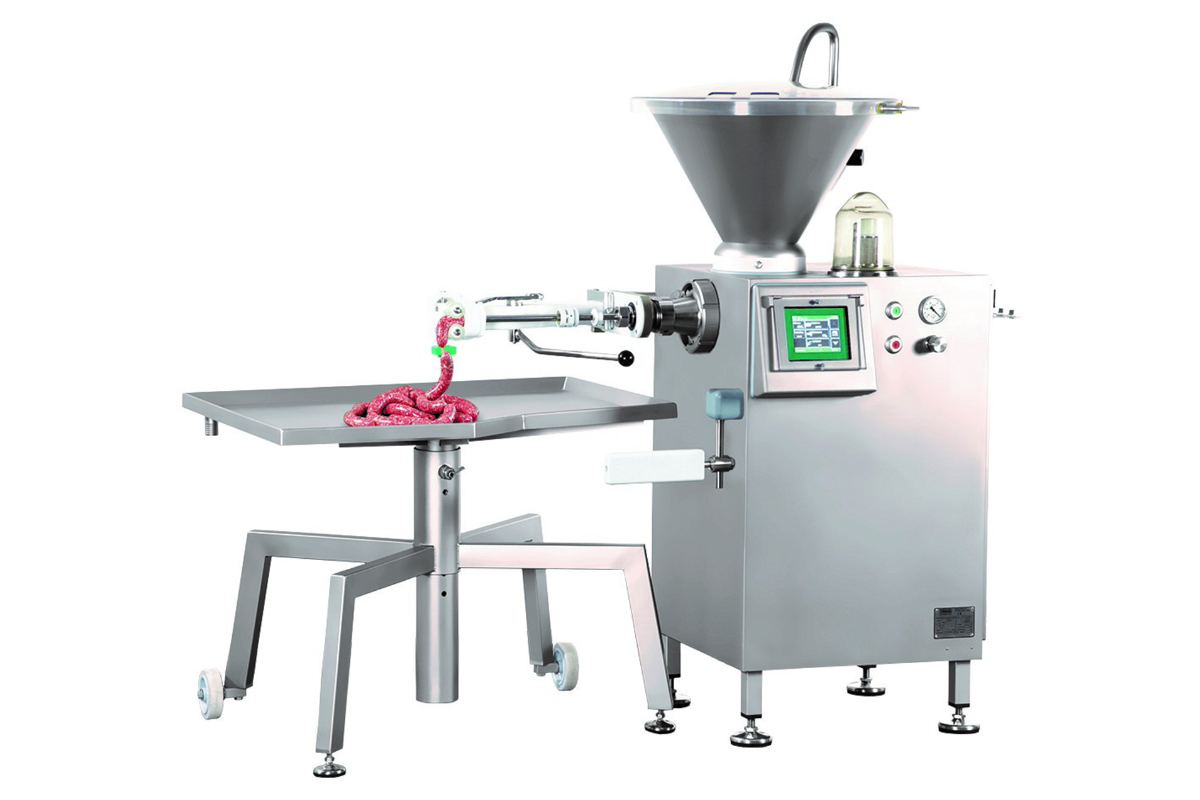Business has nearly doubled for many processors since the start of the pandemic. To keep up with demand, many smaller processors have been forced to work harder and faster. This has led to an increase in customer requests from smaller processors to evaluate and recommend solutions that address increasing volume demands and lack of employees.
“The pandemic forced many large processors to temporarily shut down, which created more demand for local processors,” said Stefan Neumann, meat specialist at Reiser, based in Canton, Mass. “The pandemic also led to more consumers cooking at home as restaurants closed and social distancing mandates became the norm.”
Therefore, the smaller processors, which tend to be more flexible when it comes to special customer requests, saw an increase in demand for their products.
Beginning in late 2020, there was a significant wave of order intake spurred by the state grant money that was made available to support the industry during the pandemic. While many of those programs have expired, the demand from smaller processors for new packaging equipment has held firm.
Patrick McGady, vice president sales and marketing for Handtmann Inc., Lake Forest, Ill., noted while they have generally the same kind of concerns as large industrial processors, smaller processors define and prioritize things like efficiency, consistency and quality in a way that addresses their concerns, their risks and opportunities.
 Small processors face different challenges than their larger counterparts, one of which is equipment reliability. (Source: Handtmann)
Small processors face different challenges than their larger counterparts, one of which is equipment reliability. (Source: Handtmann)
“Consistency, for instance, is not so much about long runs or plant-to-plant concerns, but to maintain consistent high quality in shorter runs that may occur once a week or every other week,” he said. “Quality for all processors is about product handling that can meet their standards, obviously. But in our discussions, when one piece of equipment can stop the entire operation, its reliability – its quality – is very often spoken of in the same breath as product handling. So, the risk assessment they make is a bit different, and certainly more personal.”
Ryan Spencer, product market manager, chambers and inspection for Multivac Inc., Kansas City, Mo., noted there are a lot of considerations small processors are facing right now.
“Is the spike in demand temporary, or has demand truly shifted long term? Can I find the labor needed to operate and maintain new equipment if I expand to meet current demand?” he asked. “These are tough questions to answer, and these are the problems that our customers are bringing to us to find what we can do to help solve them.”
New and improved
As a family-owned, global company, Handtmann understands that an efficient solution for smaller customers is more about flexibility and the ability to be a workhorse that operates smoothly with multiple attachments and is labor friendly by making thorough sanitation simple and changeovers quick and easy.
With this in mind, the company just introduced the new FS 525 All-In-One dual-forming module that produces patties, sticks and almost any other 3-D shape in one machine within a small footprint.
“It delivers maximum flexibility and Handtmann patented hole plate forming for free-formed 3-D products and rotary cutting for different cross-sections with a straight cut,” McGady said. “Changeovers from straight to rotary cutting occurs in less than three minutes for maximum machine utilization. That’s the kind of efficiency smaller processors especially appreciate.”
Handtmann is also in the process of introducing four new VF 800 vacuum fillers, purpose built for smaller operations. They feature all the latest performance, hygiene and scalability features of its larger VF 800 fillers to match the performance characteristics but at volumes that can meet their particular needs.
 Small processors face different challenges than their larger counterparts, one of which is equipment reliability. (Source: Reiser)
Small processors face different challenges than their larger counterparts, one of which is equipment reliability. (Source: Reiser)
Meeting challenges
The pandemic caused huge shifts in buyer behavior. When many restaurants were forced to serve via delivery or pickup only, or close completely, retail grocery became the primary way many consumers were putting food on the table. That left many processors either trying to quickly shift their focus from foodservice to retail, or somehow ramp up to handle unprecedented order volumes.
“Few if any businesses run with much excess production capability anymore, so when a system shock like this happens, it is very difficult to absorb smoothly,” Spencer said.
Multivac placed a major focus on its stock equipment program even before the pandemic began, with the goal of reducing the length of time between placement of order and install of equipment.
“We also know that keeping the machines maintained and running at peak efficiency can be a challenge for smaller processors,” Spencer said. “Our preventative maintenance plans can be a huge benefit to these processors, as our experienced technicians can make periodic visits to maintain and replace critical wear items, which free up precious hours for their own staff.”
Neumann noted that although all processors, including smaller ones, are experiencing an increase in business, the market for labor has become incredibly competitive. Therefore, the need for automation is greater than ever.
“Reiser treats every customer as if they are our only customer. We partner with customers of all sizes to develop machinery or process improvements to address their specific issues,” he said. “For small processors, Reiser has developed a line of equipment to target their needs. For example, our Lucky Linker by Vemag is an upgrade from a piston stuffer. This continuous vacuum stuffer allows a sausage processor to automatically link and portion using unskilled labor.”
The company’s application specialists work with customers at no cost to analyze their exact needs and create solutions to produce their product more efficiently and profitably.
“We can also help them eliminate the need for skilled operators to run a piece of equipment by integrating computer technology,” Neumann said.
Small processors are feeling the pain of labor shortages, but Spencer noted too often many think only of high-tech, high-cost labor savings solutions such as robotic loading.
“But there are many other ways to help reduce the labor needs for food packaging and processing lines – things like moving from hand labeling to an automatic conveyor belt labeler – that don’t require quite the investment costs,” he said. “Multivac’s team has a wealth of experience in this area and are helping small processors identify labor-saving solutions that can help ease the current pressures they face.”



